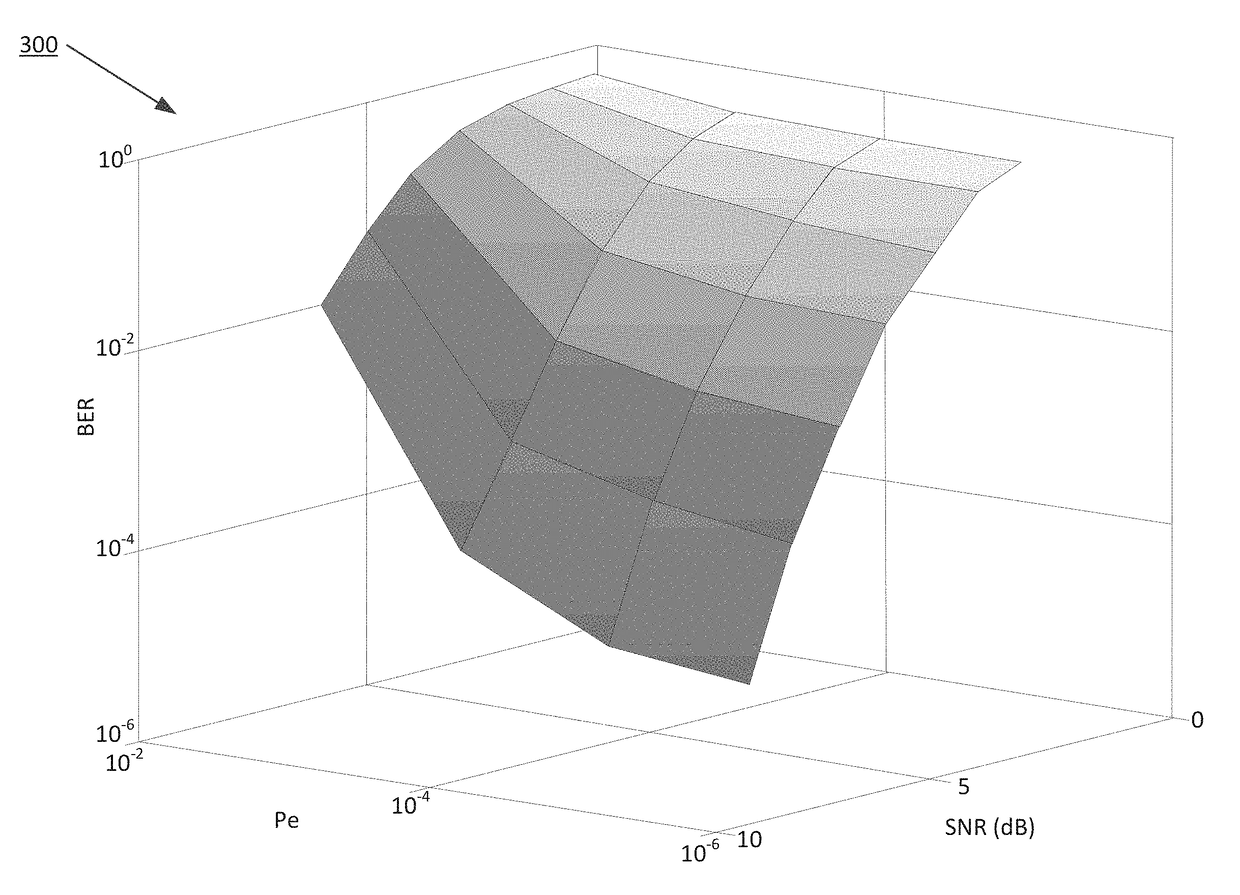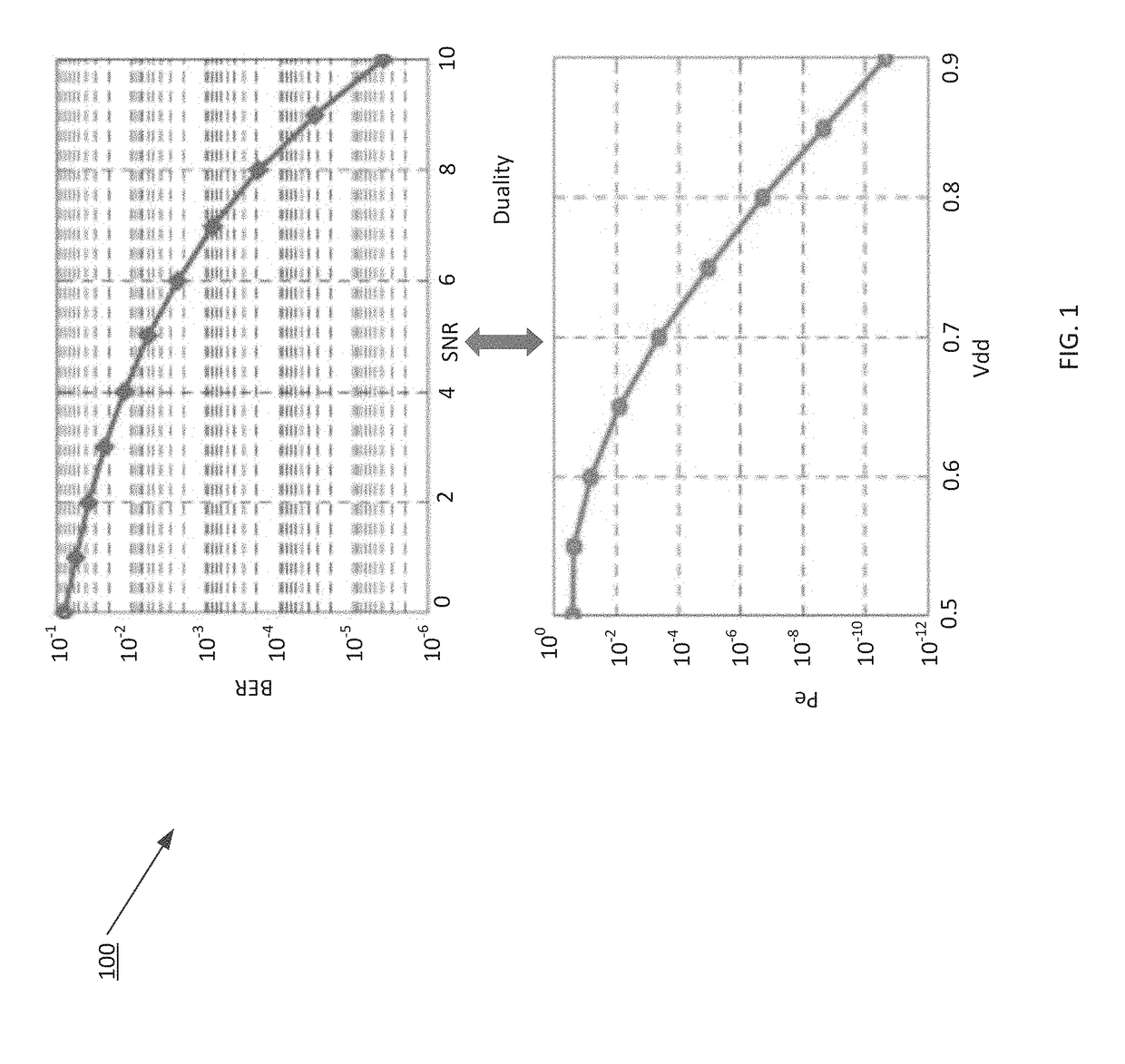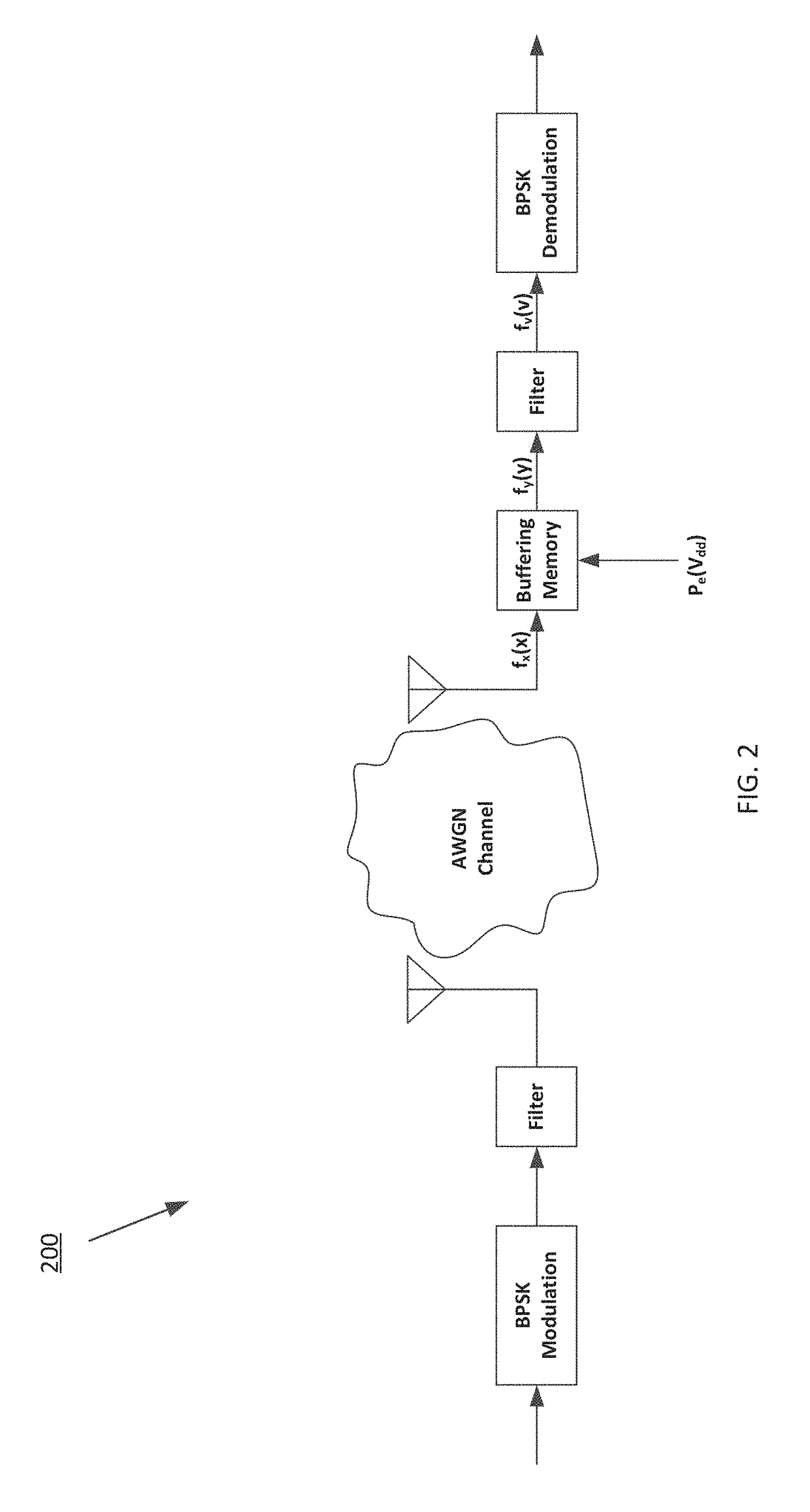Cognitive power management for communication systems
a communication system and cognitive technology, applied in the field of power management, can solve the problems of economic impracticality to insist on 100% error-free socs in terms of area and power, yield and cost challenges, and require a significant shift from error-aware to error-aware design methodologies, so as to achieve accurate and rapid estimation of change and maximize power savings
- Summary
- Abstract
- Description
- Claims
- Application Information
AI Technical Summary
Benefits of technology
Problems solved by technology
Method used
Image
Examples
example
[0121]FIG. 19 is an illustration of an exemplary DVB transceiver model 1900. To fully evaluate the proposed approach, the methodology disclosed herein was applied to a DVB-T system as shown in FIG. 19. At the transmitter, the input transport stream is applied to the outer coder, shortened Reed-Solomon (RS 204,188) followed by a convolution interleaver. The second step of channel coding is applied via a puncturing convolutional coder which is followed by the inner DVB interleaver. The mapper module uses three constellation schemes: QPSK, 16QAM and 64QAM. The OFDM module conducts IFFT operation to transform 2k or 8k mode symbols into time domain symbols. The channel is modeled as a Rayleigh fading channel. At the receiver, the incoming complex data is transformed again to the frequency domain through the FFT operation, followed by inner and outer channel decoding as shown in FIG. 19. The system was simulated with a QPSK modulation scheme with 2048 FFT and ¾ punctured convolutional cod...
PUM
 Login to View More
Login to View More Abstract
Description
Claims
Application Information
 Login to View More
Login to View More - R&D
- Intellectual Property
- Life Sciences
- Materials
- Tech Scout
- Unparalleled Data Quality
- Higher Quality Content
- 60% Fewer Hallucinations
Browse by: Latest US Patents, China's latest patents, Technical Efficacy Thesaurus, Application Domain, Technology Topic, Popular Technical Reports.
© 2025 PatSnap. All rights reserved.Legal|Privacy policy|Modern Slavery Act Transparency Statement|Sitemap|About US| Contact US: help@patsnap.com



